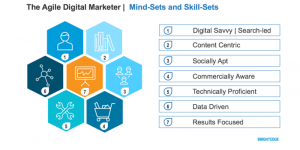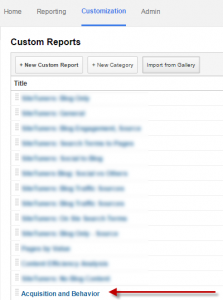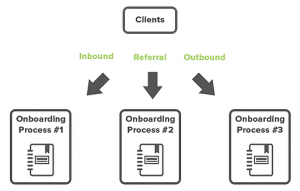New technology can be intimidating to even the most confident employees. After all, new tools or software can instantly disrupt the daily workplace routines that employees rely on.
Managers who successfully transition their teams to new technology know that providing clear communication, creating thorough documentation, and building continuous learning opportunities are key to helping employees adjust.
If you’re a manager preparing to introduce new technology to your team, you can use the steps outlined in this article to help your team adjust smoothly.
Step 1: Be Transparent About What’s Coming
Employees have an easier time managing change when they understand exactly what is happening and the reasons behind it. In the absence of clear information, rumors and anxieties can begin to creep in.
Before unveiling new technology, managers should clearly and transparently communicate how the changes will impact workers and why they are being implemented.
There are two key benefits to this approach: It provides an opportunity to build trust and set the tone.
Employees are more likely to trust companies that exhibit transparency.
“Change is the perfect opportunity to exercise transparency,” writes Kissmetrics Founder Neil Patel. “Be upfront about how you’re changing your business model, your prices, your leadership, your products, or anything else. The fact that you’re declaring the changes openly is just as significant as the change itself.”
In addition to earning the respect of employees, transparent communication can set a positive tone as employees adjust to the changes. Managers who don’t seize the opportunity to create an atmosphere of excitement about how new technology can improve the workplace are more likely to fall victim to an atmosphere where new technology is met with frustration or skepticism.
By sharing clear, honest information with your employees as often as possible, you can calm fears about the future while limiting misinformation about new technology in the workplace.
Step 2: Include Employees in the Selection Process
All too often, companies invest in new technology without ever consulting the people who will work with it the most. Including individual contributors in the technology selection process is an under appreciated step in successfully introducing new technology.
This makes sense. After all, individual contributors know the daily pain points involved in their jobs better than anyone else and are well-positioned to advise on how technology could help them work faster and more accurately.
In a report on implementing new technology, Harvard Business Review recommends selecting a committee of employees who will be affected by the process changes. These employees can research available options and vet possible solutions to find one that maximizes benefits while minimizing disruptions to work processes.
By welcoming employees’ insights, you can avoid making a significant financial and time investment in a tool that does not match your company’s needs.
Step 3: Create Thorough FAQ Documents
Any significant change in work processes generates lots of questions. Despite best intentions, questions can lead to misinformation and confusion if employees don’t have a source of reliable information.
New technology can often cause a game of telephone, where one well-meaning employee asks a question and shares information with his peers, who then share the information further. Before long, forgotten details or misunderstandings can lead to major confusion.
Instead, managers should create FAQ documents that thoroughly address key questions employees will ask, such as:
- Why the new technology is being introduced
- How the new technology was selected
- Detailed instructions for how to accomplish tasks
Additionally, managers should maintain open communication with individual contributors and update the FAQ document weekly to address new questions that emerge over time.
For example, the growing popularity of peer-to-peer payment apps might lead a company to offer new payment methods. An FAQ could use text and screenshots to walk employees through the ways they can use these apps in their daily tasks or special projects.
Ensuring that all employees access the same, accurate information can reduce confusion and help employees adjust to new technology more quickly.
Step 4: Reward Curiosity and Healthy Skepticism
In addition to addressing questions, managers should pay attention to the kinds of questions that are being asked. While some skeptical remarks can safely be ignored or even hurt morale, others can actually help drive better results.
If you manage any employees you consider “flight risks,” they might just be your secret weapon for implementing new technology. One of the most common types of flight risk employees are the high achievers who are easily bored or tempted by better opportunities elsewhere.
Instead of stressing over when your high-achieving flight risks might depart, you can help these employees channel their restless, questioning energy into vetting new technology and work processes.
New technology presents an opportunity to re-engage employees who need a new challenge while embracing their critical thinking skills. By encouraging healthy skepticism and questioning, you can refine work processes into the most efficient forms possible.
Step 5: Hire Employees With Technical Skills
Although employees might fear that your company might hire technical workers to replace them, the reality is that technical experts are often needed to help businesses successfully adopt new technology.
Depending on what type of technology your company invests in, you might need to permanently or temporarily hire someone with technical expertise.
In general, companies prioritize hiring new employees with technical skills. Nearly half of businesses (45%) hired employees for their technical skills within the last year.
If your company isn’t in a position to bring on a new full-time employee, it may still be worthwhile to hire a consultant part-time, or for several hours each week. Giving your employees direct access to a technical expert adds an additional resource that employees can rely on for support.
In addition to instilling best practices, a consultant can ease pressure on managers who train employees to use the new technology.
Companies that hire technically skilled employees are investing in a key resource that can help their employees adjust to new technology more quickly.
Step 6: Implement Ongoing Professional Development Opportunities
Businesses that offer ongoing professional development opportunities are more likely to be prepared for the future of work. You can prepare your staff to gracefully handle changes by keeping them informed of the latest industry trends and technologies.
Managers or their companies’ HR services can approach professional development in a variety of ways:
- Inviting speakers for regular “lunch and learn” events
- Providing access to online classes
- Discussing articles or industry research in regular meetings
- Participating in conferences
Offering regular professional development opportunities ensures that your team will be well-informed and unsurprised by changes in your industry.
A team that understands the latest technology and trends is less likely to be startled or dismayed when new technology is implemented.
Successfully Implementing New Technology Can Build Stronger Teams
New technology is disrupting the way we work, but adapting to new technology in the workplace doesn’t have to be scary.
Managers who are implementing new technology should communicate openly and clearly about why changes are occurring and how employees should adapt their tasks. By welcoming questions and creating reliable documentation, managers can work with their employees to create a smooth transition.
Employees who are included in the selection process are more likely to embrace new technology. Similarly, hiring a new employee full- or part-time can soothe fears by providing direct access to a technical expert.
Finally, professional development opportunities can help tame the endless unknown changes that lie ahead. Employees who are used to a culture of continuous learning will be less troubled when new technology disrupts their daily routines.
Business & Finance Articles on Business 2 Community(115)







